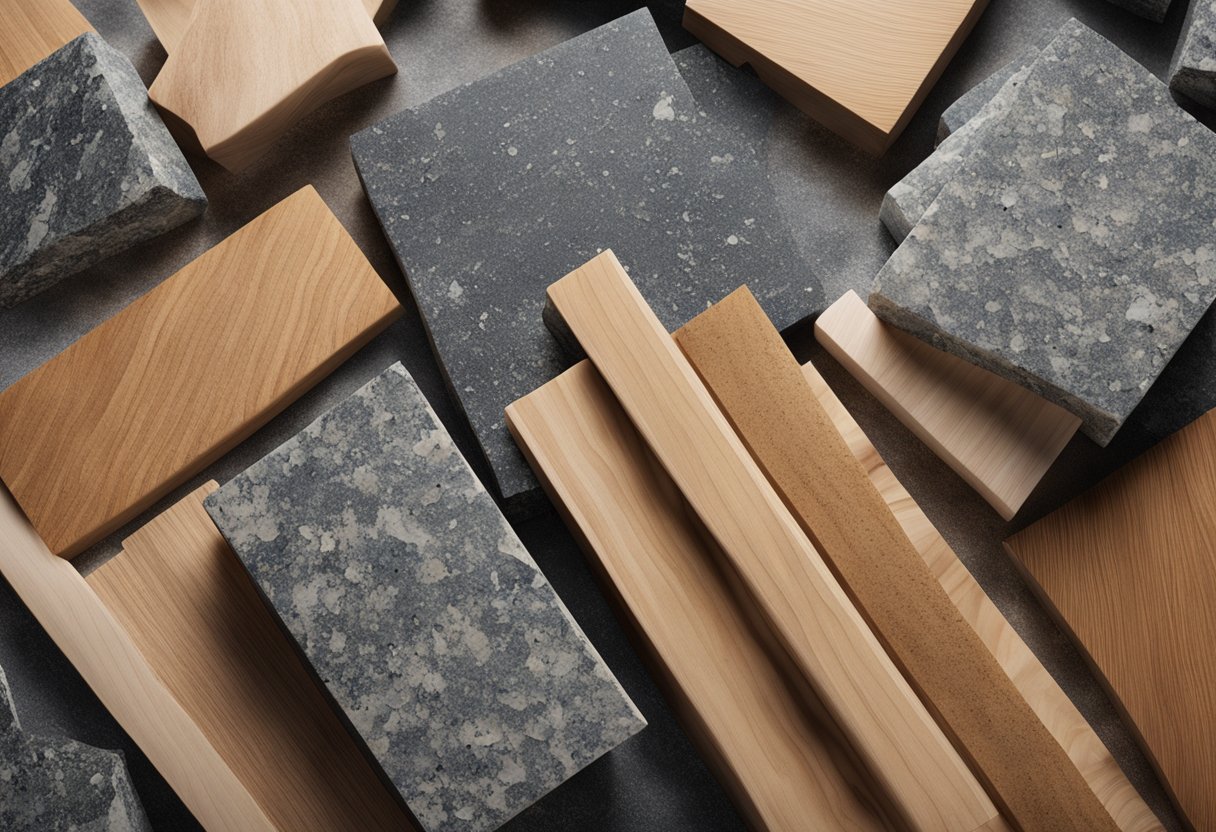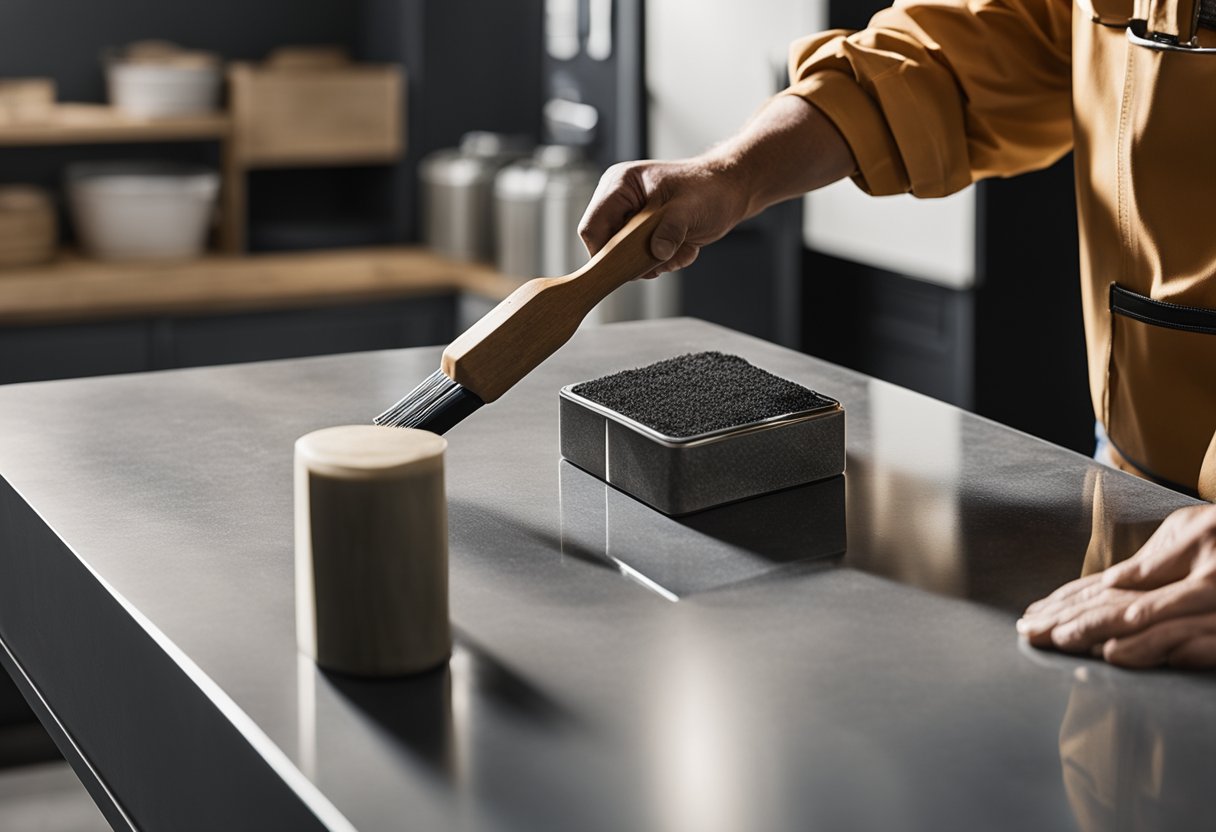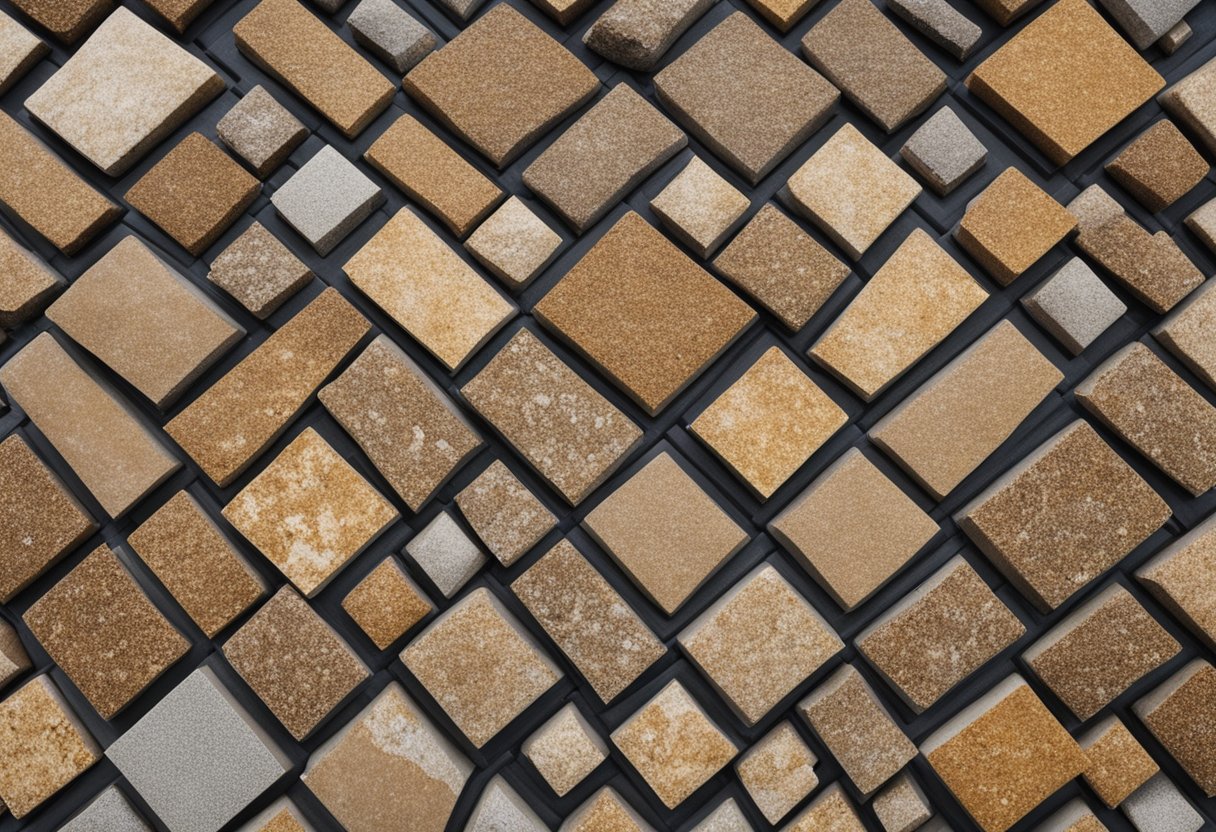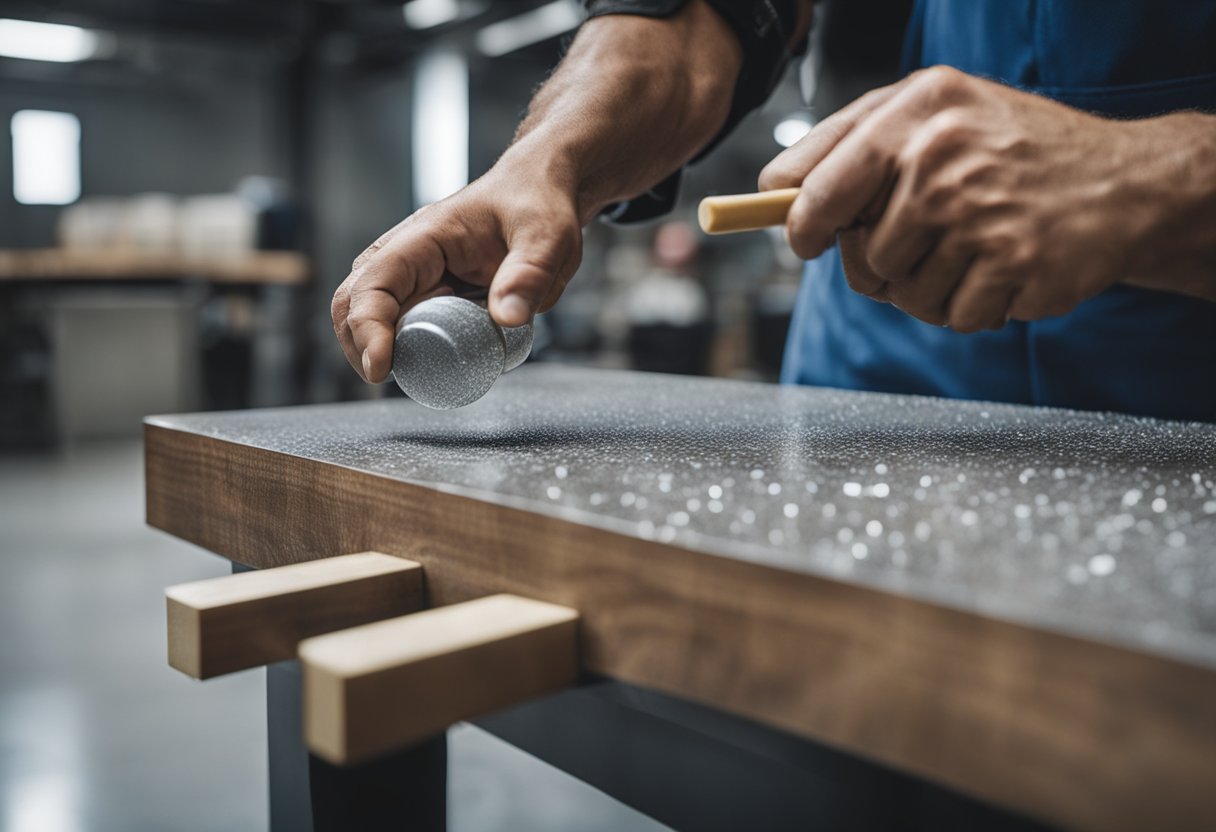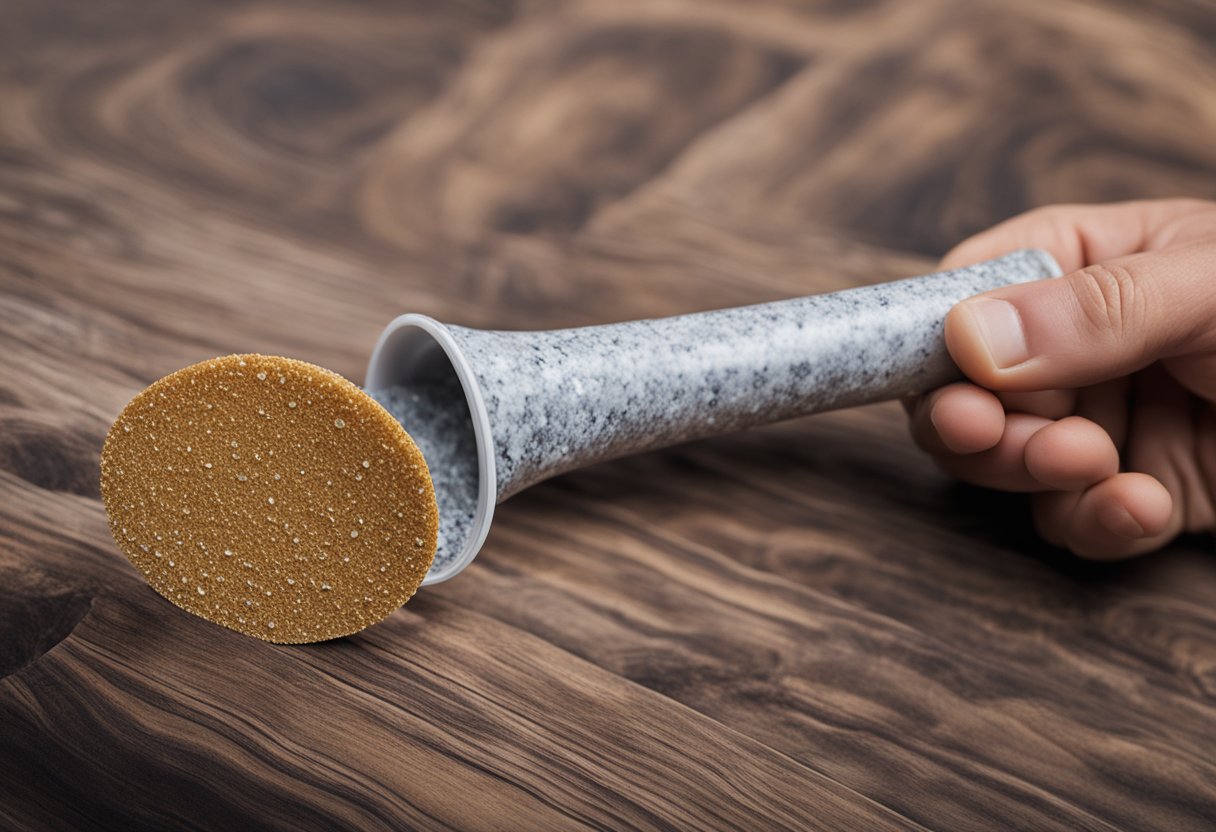I have researched and compiled information about the best glue for attaching granite to wood. When it comes to home improvement projects, adding a granite countertop to a wooden table or kitchen island can be a great way to add value and beauty to your home. However, the process of attaching granite to wood can be a bit tricky and requires the right adhesive to ensure a strong and lasting bond.
Understanding the materials involved is key to choosing the right adhesive. Granite is a dense, hard stone that is resistant to scratches and heat. Wood, on the other hand, is a porous material that can absorb moisture and expand or contract with changes in temperature and humidity. When selecting an adhesive, it is important to choose one that can bond these two materials together and withstand the stresses of daily use.
Key Takeaways
- Choosing the right adhesive is crucial in attaching granite to wood.
- Proper preparation of surfaces is essential for a strong and lasting bond.
- Safety and environmental considerations should be taken into account when working with adhesives.
Understanding the Materials
https://www.youtube.com/watch?v=POliLZRxCT4&embed=true
When it comes to bonding granite to wood, it is essential to understand the materials involved. Granite is a natural stone that is highly durable and resistant to scratches and heat. It is commonly used for countertops, tabletops, and other surfaces that require a high level of durability. On the other hand, wood is a natural material that is versatile and easy to work with. It is commonly used for furniture, flooring, and other applications.
When working with granite and wood, it is important to consider the differences in their properties. Granite is a hard, dense material that requires a strong adhesive to bond to wood. The adhesive must be able to withstand the weight and pressure of the granite without breaking down or losing its grip. Wood, on the other hand, is more porous and flexible, which can make it more challenging to bond to a hard, non-porous material like granite.
To ensure a strong bond between granite and wood, it is important to choose the right adhesive. There are many different types of adhesives available, each with its own strengths and weaknesses. Some adhesives are designed specifically for bonding natural stone to wood, while others are more general-purpose. It is important to choose an adhesive that is strong, durable, and specifically designed for bonding granite to wood.
Additionally, it is important to prepare the surfaces properly before applying the adhesive. Both the granite and wood surfaces should be clean, dry, and free of any dust, dirt, or debris. Any existing finish or sealer on the wood should be removed, and the surface should be sanded lightly to create a rough texture that will help the adhesive bond more effectively.
In summary, understanding the properties of granite and wood, as well as the importance of choosing the right adhesive and preparing the surfaces properly, is essential for achieving a strong and durable bond between these materials.
Choosing the Right Adhesive
https://www.youtube.com/watch?v=So-R-Rsp0rc&embed=true
When it comes to gluing granite to wood, choosing the right adhesive is crucial. The adhesive must be strong enough to hold the weight of the granite and durable enough to withstand the test of time. In this section, I will discuss the types of adhesives that are suitable for gluing granite to wood and their adhesive strength.
Types of Adhesives
There are several types of adhesives that are suitable for gluing granite to wood. The most popular adhesives are epoxy, silicone, polyurethane adhesive, construction adhesive, and cyanoacrylate glue. Each adhesive has its own unique properties and is suitable for different applications.
-
Epoxy Adhesive: Epoxy adhesive is a two-part adhesive that is known for its strength and durability. It is ideal for bonding granite to wood as it can withstand heavy loads and extreme temperatures. Epoxy adhesive is also water-resistant, making it suitable for outdoor applications.
-
Silicone Adhesive: Silicone adhesive is a flexible adhesive that is ideal for bonding materials that expand and contract. It is also water-resistant and can withstand extreme temperatures. However, it is not as strong as epoxy adhesive and is not recommended for heavy loads.
-
Polyurethane Adhesive: Polyurethane adhesive is a strong adhesive that is ideal for bonding granite to wood. It is water-resistant and can withstand extreme temperatures. It is also flexible, making it suitable for bonding materials that expand and contract.
-
Construction Adhesive: Construction adhesive is a strong adhesive that is ideal for bonding heavy materials. It is water-resistant and can withstand extreme temperatures. It is also flexible, making it suitable for bonding materials that expand and contract. Gorilla Glue and polyurethane construction adhesive are two popular types of construction adhesives.
-
Cyanoacrylate Glue: Cyanoacrylate glue, also known as super glue, is a fast-drying adhesive that is ideal for bonding small pieces of granite to wood. It is not recommended for heavy loads as it is not as strong as other adhesives.
Adhesive Strength
The strength of the adhesive is an important factor to consider when choosing an adhesive for gluing granite to wood. Epoxy adhesive and construction adhesive are the strongest adhesives and can withstand heavy loads. Polyurethane adhesive and silicone adhesive are also strong adhesives but are not as strong as epoxy and construction adhesive. Cyanoacrylate glue is the weakest adhesive and is not recommended for heavy loads.
In conclusion, choosing the right adhesive is crucial when gluing granite to wood. Epoxy adhesive and construction adhesive are the strongest adhesives and are recommended for heavy loads. Polyurethane adhesive and silicone adhesive are also strong adhesives but are not as strong as epoxy and construction adhesive. Cyanoacrylate glue is the weakest adhesive and is not recommended for heavy loads.
Preparation of Surfaces
https://www.youtube.com/watch?v=Tp3803XHSms&embed=true
Before gluing granite to wood, it is essential to prepare the surfaces adequately. Proper surface preparation ensures that the glue will adhere correctly, resulting in a strong bond between the two materials. In this section, I will discuss the steps involved in preparing the granite and wood surfaces.
Granite Surface Preparation
The first step in preparing the granite surface is to clean it thoroughly. Use a cleaner specifically designed for granite to remove any dirt, dust, or debris from the surface. After cleaning, let the surface dry completely before proceeding to the next step.
Next, roughen the surface of the granite to create a better bonding surface. Use sandpaper or a scuff pad to roughen the surface of the granite. You can also use a razor blade to make small scratches on the surface. This step is crucial as it helps the glue adhere to the granite better.
Wood Surface Preparation
The wood surface also needs to be prepared correctly before gluing the granite. The first step is to measure the wood surface and ensure that it is the correct size for the granite you are using. If necessary, cut the wood to the appropriate size.
Next, sand the wood surface to roughen it up. Use a rough sandpaper to create a surface that the glue can adhere to. Be sure to remove any dust or debris left from sanding before proceeding to the next step.
In summary, proper surface preparation is crucial when gluing granite to wood. For the granite surface, clean it thoroughly and roughen it up using sandpaper or a scuff pad. For the wood surface, measure it correctly and sand it to create a rough surface. By following these steps, you can ensure that the glue will adhere correctly, resulting in a strong bond between the two materials.
Application of Adhesive
https://www.youtube.com/watch?v=BnSxIU18uSU&embed=true
When it comes to gluing granite to wood, applying the adhesive properly is crucial for achieving a strong and long-lasting bond. In this section, I will provide step-by-step instructions on how to apply adhesive to both granite and wood surfaces.
Applying Adhesive to Granite
Before applying adhesive to the granite surface, it is important to clean it thoroughly to remove any dirt, dust, or debris. Once the surface is clean and dry, you can apply the adhesive using a caulking gun or a putty knife.
I recommend using a high-quality adhesive such as Liquid Nails, which is specifically designed for bonding heavy materials like granite to wood. Apply a solid bead of adhesive along the back of the granite slab, making sure to cover the entire surface.
Next, press firmly on the granite surface to ensure that the adhesive spreads evenly and creates a strong bond. You can also use clamps or weights to hold the granite in place while the adhesive dries.
Applying Adhesive to Wood
When applying adhesive to the wood surface, you should follow similar steps as when applying it to the granite. First, clean the wood surface thoroughly and make sure it is dry before applying the adhesive.
Using a caulking gun or a putty knife, apply a solid bead of adhesive to the wood surface. Make sure to cover the entire surface, leaving no gaps or spaces.
Once the adhesive is applied, carefully place the granite slab onto the wood surface, making sure it is properly aligned. Press firmly on the granite surface to ensure that it adheres to the wood.
In summary, applying adhesive to both the granite and wood surfaces is a crucial step in bonding the two materials together. By using a high-quality adhesive and following the proper application techniques, you can ensure a strong and long-lasting bond between granite and wood.
Attaching Granite to Wood
https://www.youtube.com/watch?v=CexPjwWYM5k&embed=true
When it comes to attaching granite to wood, there are a few important steps to follow to ensure a strong and lasting bond. In this section, I will go over the two main steps: positioning and adjusting, and securing and weighting.
Positioning and Adjusting
Before attaching the granite to the wood, it is important to ensure that the two surfaces are properly aligned. To do this, I recommend using clamps to hold the granite in place while making any necessary adjustments. It is important to note that the granite should have a slight overhang on all sides of the wood to prevent any gaps between the two surfaces.
Once the granite is in the correct position, it is important to make any necessary adjustments to ensure a proper fit. This may include trimming the wood or adjusting the overhang of the granite. It is important to take your time during this step to ensure that the final product is both functional and aesthetically pleasing.
Securing and Weighting
Once the granite and wood are properly positioned and adjusted, it is time to secure the two surfaces together. There are a few different methods for doing this, including using adhesive or silicone caulk. It is important to choose a high-quality adhesive that is specifically designed for use with granite and wood.
After applying the adhesive, it is important to add weight to the surface to ensure a strong bond. This can be done using clamps or weights placed on top of the granite. It is important to leave the weights in place for at least 24 hours to allow the adhesive to fully cure.
In conclusion, attaching granite to wood requires careful positioning and adjustment, as well as the use of a high-quality adhesive and weights to ensure a strong and lasting bond. By following these steps, you can create a beautiful and functional piece of furniture or countertop that will last for years to come.
Curing and Finishing
Once the granite is glued to the wood, it is important to allow sufficient time for the glue to dry and cure. The curing time will depend on the type of glue used and the environmental conditions, such as temperature and humidity. Generally, it is recommended to wait at least 24 hours before handling the glued surfaces, but it is best to consult the manufacturer’s instructions for specific guidance.
During the curing process, it is important to avoid exposing the glued surfaces to excessive heat or moisture, as this can compromise the bond strength. If necessary, use a heat gun to gently warm the surfaces, but be careful not to overheat or burn the wood or granite. Additionally, avoid applying any finishes or coatings until the glue has completely cured, as this can interfere with the bonding process.
Once the glue has dried and cured, you can apply a finish to the wood or granite to protect and enhance the appearance of the surfaces. For the wood, you can use a clear coat or stain to bring out the natural grain and color of the wood. For the granite, you can use a sealer or polish to protect against stains and scratches and give it a glossy or matte finish.
Overall, the key to a successful glue bond between granite and wood is to choose the right type of glue, prepare the surfaces properly, and allow sufficient time for the glue to dry and cure. With proper care and maintenance, a glued granite and wood surface can last for years to come.
Safety and Environmental Considerations
When working with glue for granite to wood, it is important to consider safety and environmental factors. While some adhesives may be effective, they may not be non-toxic or environmentally friendly. As a result, it is important to choose an adhesive that is both effective and safe to use.
One option for a safe and environmentally friendly adhesive is a water-based glue. These types of glues are non-toxic and do not emit harmful fumes, making them a safer choice for indoor use. Additionally, water-based glues are easy to clean up with water, reducing the amount of waste produced.
Another option is to use a green adhesive. These types of adhesives are designed to be environmentally friendly and safe to use. They are often made from natural materials and do not contain harmful chemicals. Green adhesives are a good choice for those who are concerned about the impact of their products on the environment.
When using any type of adhesive, it is important to follow the manufacturer’s instructions carefully. This will help to ensure that the adhesive is used safely and effectively. It is also important to wear protective gear, such as gloves and eye protection, when working with adhesives to avoid skin and eye irritation.
Overall, when choosing an adhesive for granite to wood, it is important to consider both safety and environmental factors. By choosing a non-toxic and environmentally friendly adhesive, you can ensure that your project is both effective and safe to use.
Conclusion
In conclusion, after researching and analyzing various types of adhesives, epoxy resin emerges as the best option for bonding granite to wood. Epoxy resin is known for its durability, strength, and versatility, making it an ideal choice for achieving a long-lasting bond between these two materials.
One of the benefits of using epoxy resin is that it is waterproof, which is essential for interior and exterior woodworking projects. This feature makes it perfect for creating custom furniture pieces, cabinets, and backsplashes.
When using epoxy resin, it is essential to ensure a strong initial tack so that the bond is secure. Using a palm sander to rough up the surface of the wood and granite can help with this. It is also important to keep any excess glue off the surface of the granite when applying it to the wood to prevent discoloration or other damage due to contact with the adhesive.
In addition to its grip and strength, epoxy resin can also fill in dents and scratches, making it a great option for repairing damaged wood or granite surfaces.
Overall, epoxy resin is a reliable and versatile adhesive that can be used for a wide range of woodworking projects involving granite and wood. Whether you are a DIY enthusiast or a professional woodworker, epoxy resin can help you achieve a strong and long-lasting bond between these two materials.
Frequently Asked Questions
What type of adhesive is best for attaching granite to wood?
Epoxy glue is the best adhesive for attaching granite to wood. It has excellent bonding strength and can withstand high temperatures and moisture. Additionally, it dries clear, making it a great option for aesthetic purposes.
How do you properly secure granite to a wooden base?
To properly secure granite to a wooden base, you should first sand the surface of the wood to create a rough surface that the glue can adhere to. Then, apply the epoxy glue to the wood and place the granite on top. Use clamps to hold the granite in place until the glue dries completely.
Can polyurethane adhesive be used to attach granite to wood?
Polyurethane adhesive can be used to attach granite to wood, but it is not the best option. Polyurethane adhesive tends to expand as it dries, which can cause the granite to shift or crack.
Will Gorilla Glue work for attaching granite to wood?
Gorilla Glue can work for attaching granite to wood, but it is not the best option. Gorilla Glue is a polyurethane-based adhesive that expands as it dries, which can cause the granite to shift or crack.
What are some alternatives to using glue for attaching granite to wood?
Some alternatives to using glue for attaching granite to wood include using mechanical fasteners such as screws or brackets, or using silicone adhesive. However, these alternatives may not provide the same level of bonding strength as epoxy glue.
Is Liquid Nails a good choice for attaching granite to wood?
Liquid Nails is not a good choice for attaching granite to wood. While it may work for some applications, it is not designed to withstand the weight and pressure of granite. Epoxy glue is a much better option for attaching granite to wood.

Hi, I’m Sal Muller of Tooltrip.com. My DIY experience led me to understand essential power tools for home projects. Tooltrip.com guides enthusiasts and professionals in choosing right tools for any job. I provide concise top tool reviews for easier, efficient DIY.

